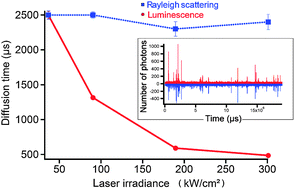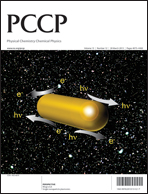One-photon excited luminescence of single gold particles diffusing in solution under pulsed illumination†
Abstract
Here we report on the visible luminescence of single gold nanospherical particles diffusing in

- This article is part of the themed collection: Optical studies of single metal nanoparticles

 Please wait while we load your content...
Please wait while we load your content...